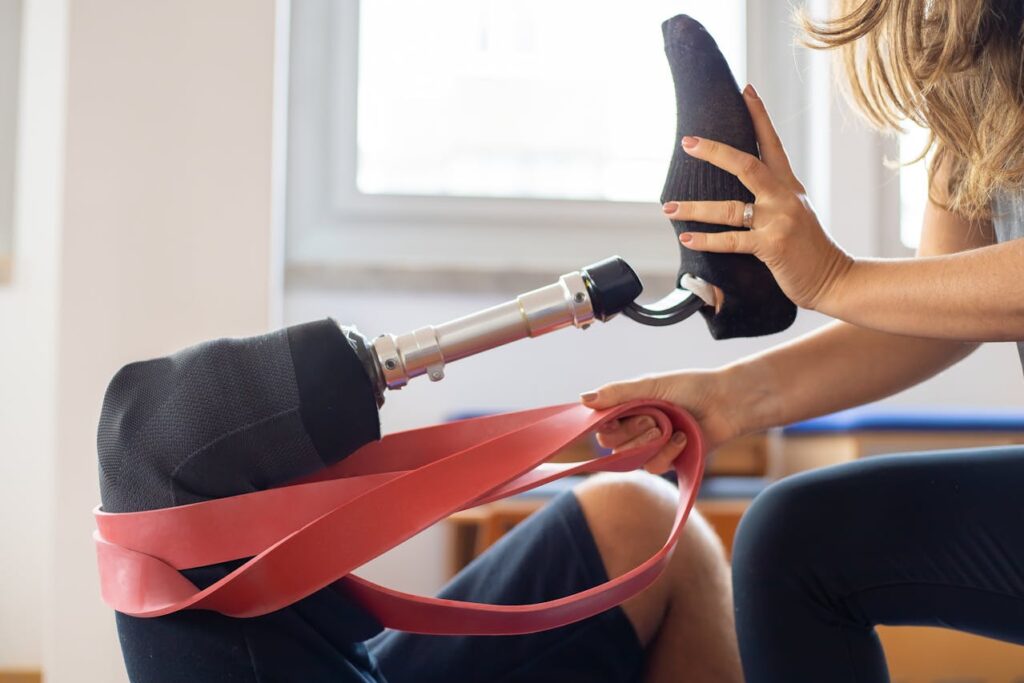Losing a limb can be tough for anyone, but for children, it comes with extra challenges. Kids are still growing, learning new skills, and adapting to the world around them. Traditional prosthetics, while effective, can be expensive and difficult to modify as a child grows. This is where 3D-printed prosthetics are making a big difference. They provide an affordable, customizable, and lightweight solution designed to fit the unique needs of children.
At Robobionics, we specialize in cutting-edge 3D-printed prosthetic solutions that give kids the freedom to move, play, and explore without limitations. Let’s dive into how these prosthetics work, why they are the future, and how they help children regain independence and confidence.
1. The Need for Better Pediatric Prosthetics
Children with limb differences require prosthetics that are not just functional but also comfortable, adaptable, and engaging.
Growth and Frequent Replacements
One of the biggest challenges in pediatric prosthetics is that children grow rapidly. A prosthetic that fits well today may become too small in just a few months. Traditional prosthetics are expensive and often need full replacements instead of simple adjustments. This puts a financial strain on families and can limit a child’s access to the right prosthetic at the right time.
Encouraging Movement and Play
Kids are naturally active. They run, climb, jump, and play without thinking twice. A prosthetic limb must keep up with this level of activity while remaining lightweight and easy to use. Many traditional prosthetics can be heavy and rigid, making it harder for children to move freely.
Psychological and Social Impact
A prosthetic should not just be a tool—it should be something a child feels proud to wear. Many kids feel self-conscious about using prosthetic limbs, especially if they look too clinical. Fun designs, bright colors, and personalized features help children see their prosthetic as part of their identity rather than just a medical device.
2. How 3D Printing is Changing Pediatric Prosthetics
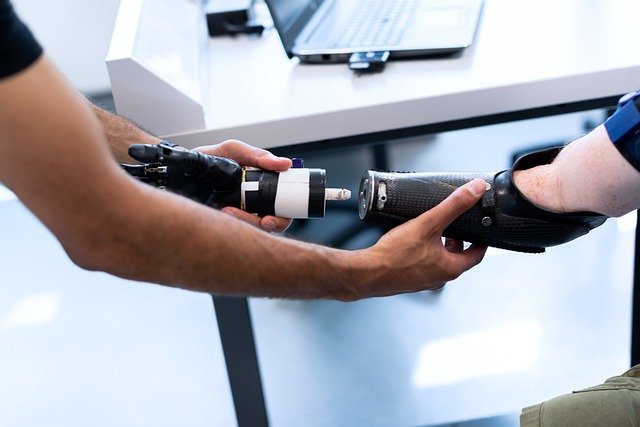
3D printing technology has revolutionized the way prosthetics are designed, making them more accessible, customizable, and affordable than ever before.
Faster and More Affordable Production
Traditional prosthetics take weeks or even months to manufacture, often requiring multiple fittings and adjustments. 3D-printed prosthetics can be made in a fraction of the time at a much lower cost. The printing process allows for quick adjustments, meaning a growing child can get a new prosthetic or a resized socket without long delays.
Highly Customizable for Each Child
Every child is unique, and their prosthetic should be too. With 3D printing, prosthetists can create a limb that is tailored to the child’s specific measurements, needs, and preferences. Whether it’s a bionic hand like our Grippy™, a custom-designed prosthetic leg, or an arm with a superhero theme, 3D printing makes personalization easy and fun.
Lightweight and Comfortable Materials
Since children are smaller and have less muscle strength than adults, heavy prosthetics can cause discomfort and strain. 3D printing allows for the use of lightweight yet durable materials, making it easier for children to wear and use their prosthetic limbs throughout the day.
3. Customization: Making Prosthetics Fun and Functional
A child’s prosthetic should be something they love wearing, not something they feel forced to use.
Designs That Match Their Personality
With 3D-printed prosthetics, kids can choose their favorite colors, patterns, or even themes based on their favorite superheroes, animals, or cartoons. This helps them feel more confident and excited about using their prosthetic limb, reducing any self-consciousness they might have in social situations.
Adaptable for Different Activities
Some children need a prosthetic for everyday use, while others might want one that helps them with specific activities like sports, drawing, or playing musical instruments. 3D printing allows for specialized attachments or modular designs that can be easily swapped depending on the activity.
Perfect Fit for Maximum Comfort
Since every child’s residual limb is different, achieving a perfect fit is essential. 3D scanning and printing make it possible to create a prosthetic limb that fits precisely, eliminating discomfort and reducing pressure points that could cause irritation or pain.
4. The Cost Advantage of 3D-Printed Prosthetics

One of the most significant benefits of 3D-printed prosthetics is their affordability compared to traditional prosthetics.
Lower Production Costs
Traditional prosthetic limbs require expensive materials, manual labor, and complex manufacturing processes. 3D printing eliminates many of these costs by using efficient, computer-aided design (CAD) technology to produce parts quickly and at a lower cost.
Affordable Replacements and Adjustments
Because kids grow quickly, they often need new prosthetic sockets or limb adjustments. With traditional prosthetics, this can mean spending thousands of rupees on a new limb every year. 3D-printed prosthetics allow for affordable part replacements and modifications, ensuring the child always has a well-fitted, functional limb without breaking the family’s budget.
More Accessible to Families in Need
Many children around the world do not have access to quality prosthetic care due to high costs and limited availability. 3D printing has made it possible for families in rural or underserved areas to receive custom prosthetic solutions without long wait times or excessive expenses.
5. The Future of 3D-Printed Prosthetics for Kids
With rapid advancements in technology, 3D-printed prosthetics are only getting better.
Integration with Smart Technology
New developments in bionic limbs are making prosthetics even more functional. 3D-printed prosthetics can now incorporate sensors and microprocessors that allow for better grip, movement control, and even sensory feedback, helping children interact with the world more naturally.
Sustainability and Eco-Friendly Materials
As 3D printing technology evolves, biodegradable and recyclable materials are being developed for prosthetic limbs. This ensures that prosthetics are not only affordable but also environmentally friendly.
Expanding Access to Underserved Communities
With local 3D-printing hubs and mobile prosthetic clinics, more children around the world will have access to high-quality prosthetic solutions. The goal is to make sure that every child who needs a prosthetic can receive one, no matter where they live.
6. The Science Behind 3D-Printed Prosthetics
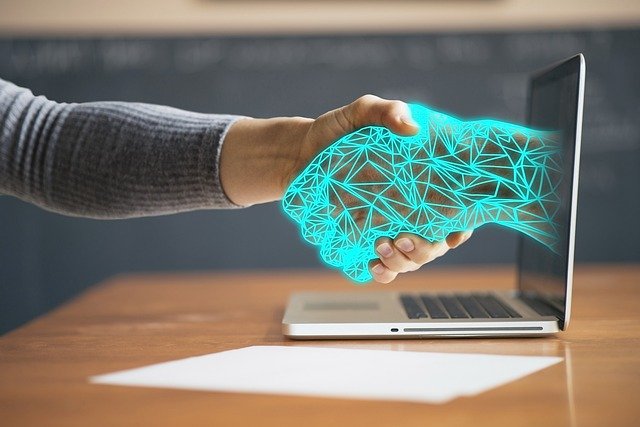
Understanding how 3D-printed prosthetics work helps us appreciate why they are such a breakthrough in the world of prosthetic technology.
Digital Scanning for a Perfect Fit
One of the greatest advantages of 3D-printed prosthetics is their precise fit. Instead of relying on traditional molds and measurements, which can be time-consuming and uncomfortable for children, 3D printing uses digital scanning to capture the exact shape and size of the child’s limb.
This ensures that the prosthetic fits comfortably, eliminating painful pressure points or loose-fitting sockets that can cause irritation. The result? A limb that feels like a natural extension of the body.
Layer-by-Layer Printing for Customization
Once the design is finalized, the prosthetic limb is created layer by layer using high-quality materials. The beauty of this process is that each layer can be modified, allowing for adjustments in thickness, flexibility, and strength based on the child’s specific needs.
For example, if a child needs extra reinforcement for high-impact activities like sports, the prosthetic can be printed with stronger, more resilient materials in key areas while keeping other parts lightweight.
Stronger, Lighter, and More Durable Materials
3D printing allows for the use of advanced materials that strike the perfect balance between durability and comfort. Some of the most commonly used materials include:
- PLA (Polylactic Acid): A lightweight, eco-friendly material that’s great for kids’ prosthetics.
- ABS Plastic: Provides strength and durability, ideal for active children.
- Nylon Composites: Offer flexibility and shock absorption, making them excellent for lower-limb prosthetics.
These materials ensure that the prosthetic remains strong while being comfortable enough for daily use.
7. Making Prosthetics More Accessible with 3D Printing
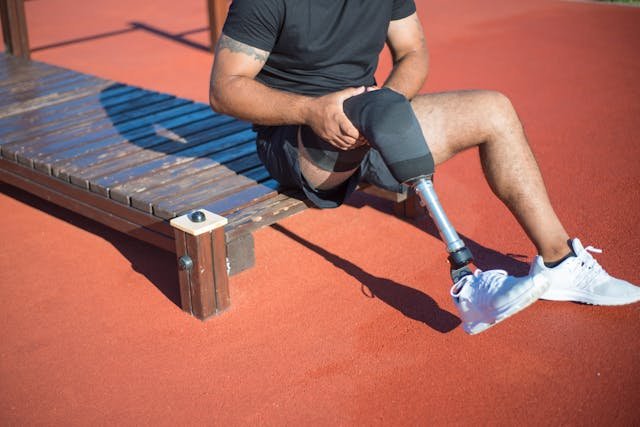
One of the biggest hurdles for families seeking prosthetic solutions is the cost and availability of traditional options.
Bringing Down the Cost
Traditional prosthetics can cost thousands of dollars (or lakhs of rupees), making them out of reach for many families. Because children outgrow their prosthetics frequently, parents are often forced to choose between paying for a new prosthetic every year or having their child wear an ill-fitting limb.
3D printing dramatically reduces production costs, making high-quality prosthetics available at a fraction of the price. This affordability ensures that more children have access to the prosthetic care they need without financial stress.
Faster Turnaround Time
Another challenge with traditional prosthetics is the long production time. Kids who need a replacement limb often have to wait weeks or even months before they receive their new prosthetic. With 3D printing, the process is much faster—in some cases, a prosthetic can be designed, printed, and ready within days.
This speed ensures that children can get back to their normal activities as quickly as possible, minimizing disruption to their daily lives.
Prosthetic Care for Remote and Underserved Areas
Many children around the world do not have access to quality prosthetic care, especially in remote or rural areas. 3D printing is changing this by allowing local prosthetic centers or mobile clinics to print limbs on-site, bringing life-changing solutions to children who would otherwise go without.
At Robobionics, we are working to expand access to 3D-printed prosthetics across India, ensuring that every child—no matter where they live—has the opportunity to receive a high-quality, customized prosthetic limb.
8. Encouraging Kids to Embrace Their Prosthetics
Beyond function and affordability, 3D-printed prosthetics are helping children see their prosthetic limbs in a new way—as an exciting, unique, and empowering part of who they are.
Superhero Hands and Personalized Designs
One of the most exciting aspects of 3D-printed prosthetics is the ability to fully customize the design. Kids can choose from:
- Superhero-themed hands (like an Iron Man or Spider-Man prosthetic)
- Colorful patterns and prints that reflect their personality
- Glow-in-the-dark or transparent limbs for a futuristic look
This level of customization makes children feel excited and proud to wear their prosthetic, reducing any feelings of self-consciousness and boosting their confidence in social settings.
Adapting to Different Activities
Another advantage of 3D-printed prosthetics is the ability to switch out different attachments based on what the child wants to do. Some children may need a special attachment for holding a pencil, while others may want a gripping attachment for playing sports.
By making prosthetics adaptable, kids don’t have to feel limited—they can participate fully in school, sports, and hobbies just like their peers.
Creating a Sense of Independence
Having a well-fitted, comfortable, and personalized prosthetic limb empowers children to be more independent. They no longer need to rely on others for simple tasks, which helps build self-esteem and confidence.
At Robobionics, we believe that every child deserves to feel strong, independent, and capable. Our 3D-printed prosthetics are designed to do just that.
9. The Role of Bionic Technology in 3D-Printed Prosthetics
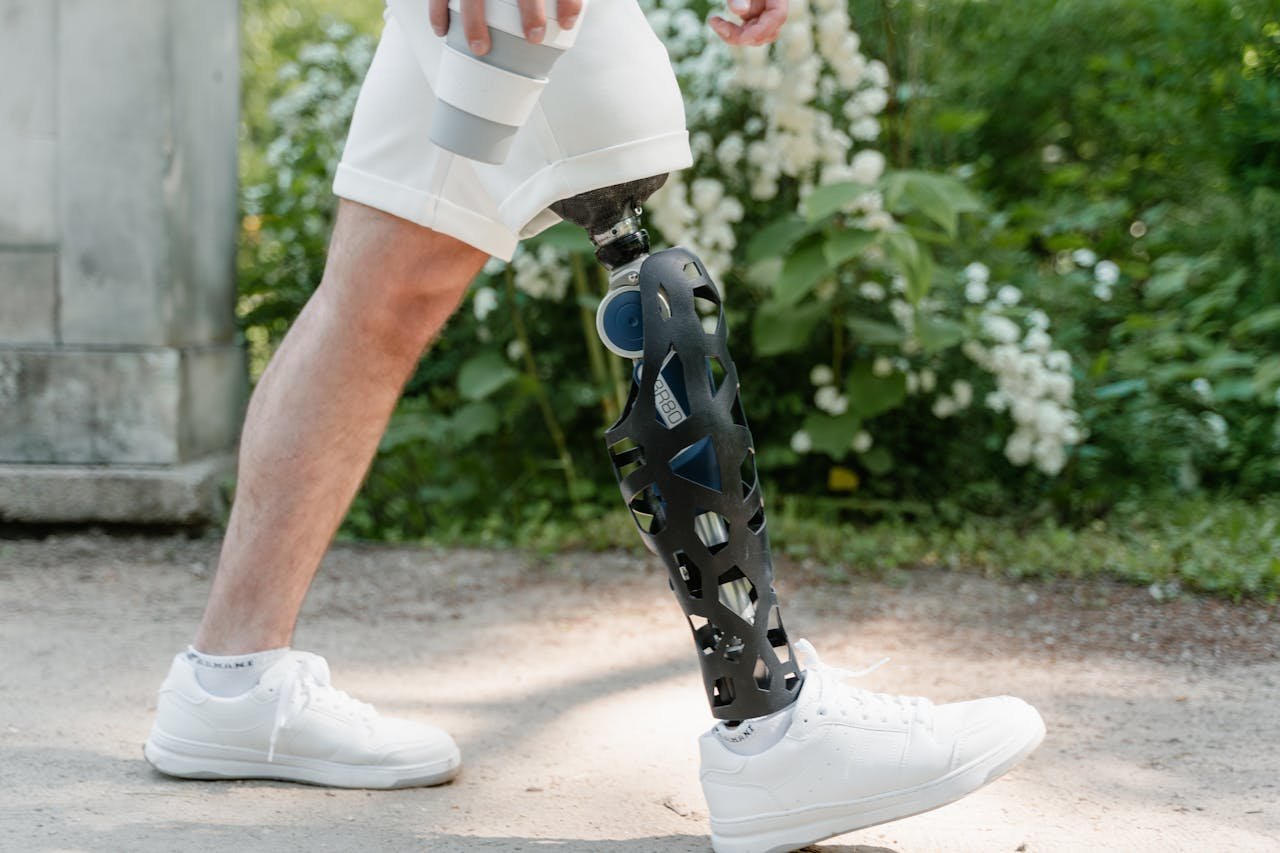
Advancements in bionic prosthetics are taking 3D-printed limbs to the next level, making them smarter and more functional.
Myoelectric Control for Natural Movement
Traditionally, prosthetic hands and arms were purely mechanical, requiring the child to manually operate them. Today, myoelectric technology allows 3D-printed prosthetic hands, like our Grippy™, to detect muscle signals from the residual limb and move naturally.
This means a child can open and close their prosthetic hand just by thinking about it, making daily tasks like gripping objects, playing with toys, or even shaking hands much easier.
Smart Sensors for Better Functionality
Some 3D-printed bionic limbs now include smart sensors that provide real-time feedback, allowing for better control and movement precision. This technology helps kids fine-tune their motor skills and makes their prosthetic feel more like a natural part of their body.
Future Possibilities: AI and Robotics
As technology advances, artificial intelligence (AI) and robotics are being integrated into 3D-printed prosthetics. Imagine a prosthetic that learns from a child’s movements and automatically adapts to their needs! These innovations are making prosthetic limbs more intuitive, functional, and life-changing than ever before.
10. Eco-Friendly and Sustainable Prosthetic Solutions
As the world shifts toward sustainability, 3D-printed prosthetics are leading the way with environmentally friendly solutions.
Reducing Waste in Prosthetic Manufacturing
Traditional prosthetic production involves cutting, molding, and assembling materials, often resulting in a lot of waste. With 3D printing, only the necessary material is used, reducing waste and making prosthetic production more sustainable.
Recyclable and Biodegradable Materials
Some 3D-printed prosthetic designs now incorporate biodegradable materials like PLA plastic, which is made from corn starch and breaks down naturally over time. Other designs use recyclable nylon composites, ensuring that prosthetic limbs don’t contribute to environmental waste when they are replaced.
Reusable and Upgradable Components
Unlike traditional prosthetics, where the entire limb must be replaced, 3D-printed prosthetics allow for individual parts to be swapped out or upgraded. This means that instead of throwing away an entire limb when a child grows, only certain components like the socket or fingers need to be changed, making prosthetics more cost-effective and eco-friendly.
11. Sports and Activity-Specific Prosthetics for Kids
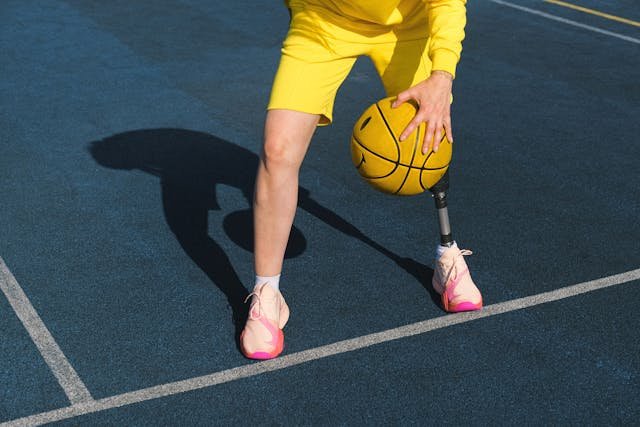
Every child should have the freedom to play, explore, and enjoy sports without limitations. 3D printing is making this possible with specialized prosthetics designed for different activities.
Custom Prosthetics for Running and Jumping
Many kids with lower-limb prosthetics struggle with running due to heavy or stiff designs. 3D-printed prosthetics can now include spring-loaded feet and energy-return materials, allowing children to run, jump, and play sports with ease.
Adaptive Hands for Playing Sports
For children who love basketball, baseball, or swimming, 3D-printed prosthetic hands can be designed with grip-enhancing materials or waterproof components, ensuring that they can hold a ball, swing a bat, or paddle in the water without any difficulty.
Interchangeable Attachments for Different Hobbies
Instead of needing a separate prosthetic for every activity, 3D printing allows for modular designs, meaning kids can swap out different attachments depending on the sport or hobby they are engaging in. Whether it’s a special hand for cycling or a paddle attachment for kayaking, 3D printing makes it easy to customize prosthetics for active children.
12. Enhancing Accessibility with 3D-Printed Prosthetic Clinics
One of the biggest challenges in prosthetic care is accessibility, especially for children in remote areas or developing countries. 3D printing is breaking down these barriers.
On-Site 3D Printing for Faster Access
Rather than requiring families to travel long distances to specialized prosthetic centers, local clinics can now install 3D printers to produce prosthetic limbs on-site. This means that children in villages, rural towns, or underserved communities can receive customized prosthetics without long waiting times.
Mobile Prosthetic Units for Remote Areas
Some organizations are now developing mobile prosthetic labs equipped with 3D printers, scanners, and fitting stations. These mobile units travel to different locations, helping children who may not otherwise have access to prosthetic care.
Reducing Dependency on Imported Prosthetics
Many countries rely on imported prosthetic components, which can be expensive and time-consuming to obtain. 3D printing enables local production, making high-quality prosthetics more affordable and widely available. At Robobionics, we are proud to be part of India’s Make in India initiative, ensuring that children receive locally designed and manufactured prosthetics without delays or high costs.
13. Emotional and Social Benefits of 3D-Printed Prosthetics
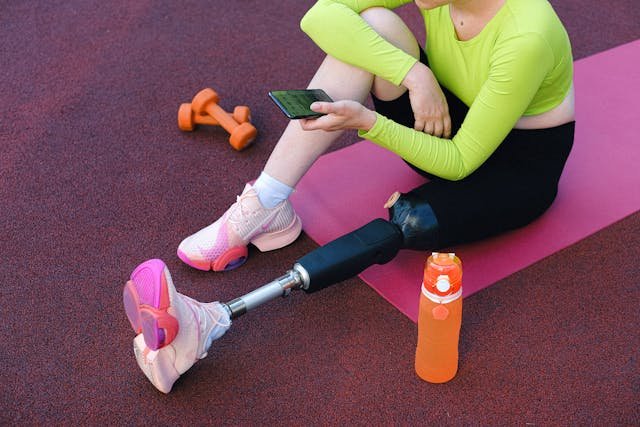
Beyond the physical advantages, 3D-printed prosthetics have a profound impact on a child’s self-esteem and social interactions.
Boosting Confidence with Personalized Designs
A prosthetic limb should be something a child feels excited to wear, not something they hide. With custom colors, patterns, and themed designs, kids can proudly show off their prosthetic rather than feeling self-conscious about it.
Encouraging Social Inclusion
Children with limb differences may sometimes feel different from their peers. Having a prosthetic that looks cool, futuristic, or even superhero-like makes it easier for them to integrate socially and participate fully in activities. Many kids even turn their prosthetic into a conversation starter, helping them form friendships and feel more accepted.
Empowering Children to Embrace Their Uniqueness
A child’s prosthetic limb should make them feel empowered, not limited. By offering fun, creative, and interactive prosthetic designs, 3D printing helps kids embrace their uniqueness and see their prosthetic as a symbol of strength rather than a disability.
Conclusion: A Brighter Future with 3D-Printed Prosthetics
3D-printed prosthetics are transforming the lives of children by making prosthetic limbs more affordable, customizable, and accessible. They allow kids to move freely, play with confidence, and express themselves in ways that traditional prosthetics never could.
At Robobionics, we are proud to be at the forefront of this innovation, providing high-quality 3D-printed prosthetic solutions tailored to each child’s needs. Whether your child needs a new prosthetic hand, arm, or leg, we are here to help.
🚀 Want to see how 3D-printed prosthetics can change your child’s life? Book a free consultation with our experts today!
💡 Have questions about pediatric prosthetics? Contact us now and discover how we can create the perfect prosthetic for your child!



